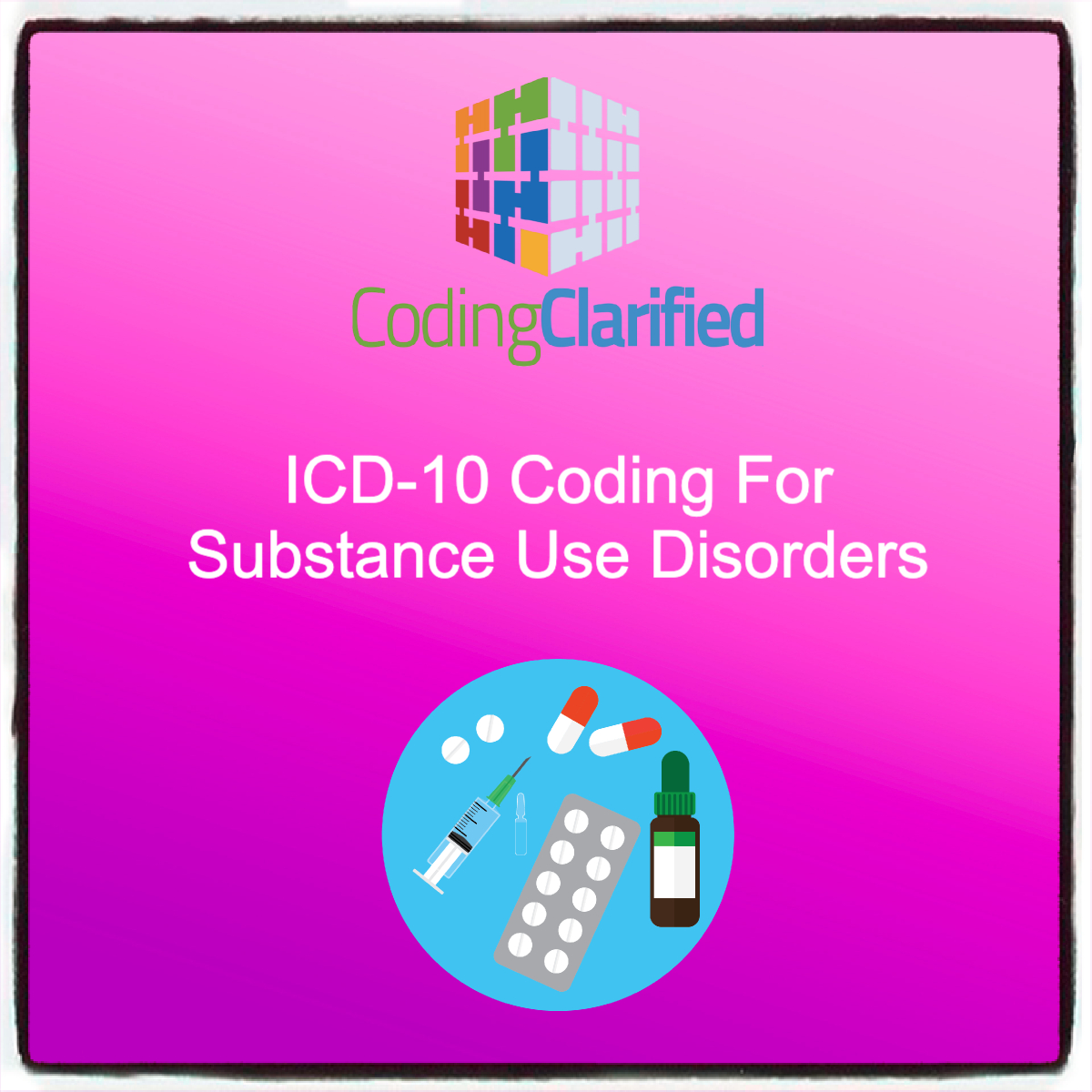Substance use disorders (SUDs) are significant public health concerns that impact millions of individuals worldwide. Accurate diagnosis and treatment of these disorders are essential for effective intervention and management. The International Classification of Diseases, 10th Revision (ICD-10) provides a comprehensive coding system that helps healthcare professionals document and classify substance use disorders. This article delves into ICD-10 coding for substance use disorders, offering insights into coding practices, common challenges, and best practices.
ICD-10-CM Diagnosis Code Z71. 51: Drug abuse counseling and surveillance of drug abuser
Understanding ICD-10 Coding for Substance Use Disorders
ICD-10 coding for substance use disorders involves categorizing various conditions related to the use and abuse of substances such as alcohol, opioids, stimulants, and sedatives. The ICD-10 coding system is designed to capture the complexity and severity of these disorders, allowing for accurate documentation, treatment planning, and reimbursement.
Key Components of ICD-10 Coding for Substance Use Disorders:
- Code Categories: ICD-10 codes for substance use disorders are primarily found in the “Mental, Behavioral and Neurodevelopmental Disorders” chapter, specifically in the range from F10 to F19. These codes are divided into categories based on the substance involved and the nature of the disorder.
- F10: Alcohol-related disorders
- F11: Opioid-related disorders
- F12: Cannabinoid-related disorders
- F13: Sedative, hypnotic, or anxiolytic-related disorders
- F14: Cocaine-related disorders
- F15: Other stimulant-related disorders
- F16: Hallucinogen-related disorders
- F17: Tobacco-related disorders
- F18: Inhalant-related disorders
- F19: Multiple drug use and use of other psychoactive substances
- Severity and Specificity: ICD-10 codes for substance use disorders include details about the severity of the disorder, such as mild, moderate, or severe. These levels of severity are crucial for determining appropriate treatment plans and understanding the impact of the disorder on the individual’s life.For example:
- F10.10 – Alcohol use disorder, mild
- F10.20 – Alcohol use disorder, moderate
- F10.21 – Alcohol use disorder, severe
- Additional Codes: ICD-10 also includes codes for specific manifestations or complications of substance use disorders. For instance, codes for withdrawal symptoms, intoxication, and related medical complications provide a more comprehensive view of the patient’s condition.
- F10.239 – Alcohol use disorder with withdrawal, unspecified
- F11.21 – Opioid dependence with withdrawal
- F12.288 – Cannabis use disorder with other specified effects
Common Challenges in ICD-10 Coding for Substance Use Disorders
- Complexity of Diagnosis: Substance use disorders often present with complex symptomatology and co-occurring mental health issues. Accurate coding requires a detailed understanding of the patient’s condition and the ability to select the most appropriate codes from a wide range of options.
- Updates and Changes: The ICD-10 system is subject to updates and revisions, which can impact coding practices. Staying current with these changes is essential for accurate documentation and compliance. Coders must regularly review updates to ensure they are using the most current codes and guidelines.
- Documentation Accuracy: Effective coding relies on precise and comprehensive documentation. Incomplete or inaccurate documentation can lead to incorrect coding, which may affect treatment decisions and reimbursement. Healthcare providers must ensure that all relevant details about the substance use disorder are thoroughly documented.
- Training and Education: Coders need specialized training to handle the complexities of substance use disorder coding. Continuous education and professional development are necessary to maintain coding accuracy and stay abreast of industry best practices.
Best Practices for ICD-10 Coding in Substance Use Disorders
- Thorough Documentation: Ensure that all relevant information about the patient’s substance use disorder is documented, including the type of substance, the severity of the disorder, and any related complications. Detailed documentation supports accurate coding and effective treatment planning.
- Regular Training: Invest in ongoing training and professional development for coding staff. This helps ensure that coders are familiar with the latest updates to the ICD-10 system and are proficient in coding substance use disorders.
- Use of Coding Software: Leverage advanced coding software and tools to streamline the coding process. These tools can help identify the correct codes based on the documented information and reduce the risk of errors.
- Collaboration with Healthcare Providers: Work closely with healthcare providers to clarify any ambiguities in documentation. Effective communication between coders and clinicians ensures that all relevant details are captured and accurately coded.
- Stay Informed: Keep up-to-date with changes in coding guidelines, industry standards, and best practices. Subscribe to professional organizations, attend webinars, and review industry publications to stay informed about developments in ICD-10 coding for substance use disorders.
ICD-10 coding for substance use disorders is a critical aspect of the healthcare system, facilitating accurate diagnosis, treatment, and reimbursement. While the complexity of coding and the need for up-to-date knowledge pose challenges, adopting best practices such as thorough documentation, regular training, and leveraging technology can enhance coding accuracy and effectiveness. As substance use disorders continue to impact public health, effective coding will play a key role in improving patient outcomes and supporting healthcare providers in delivering quality care.


